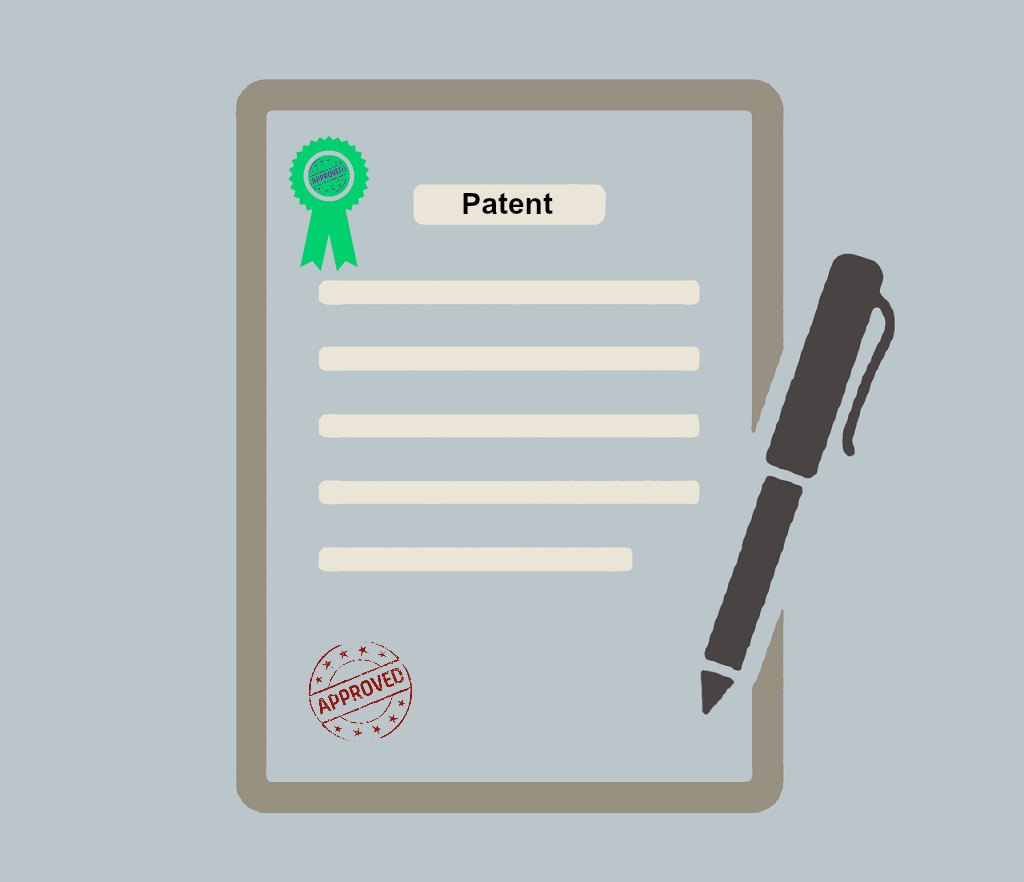Do you have a great idea for inventing something exclusive? If you think what you have invented something very unique and want it to be under your name, having it patented is the most secure thing to do.
A patent is a government authority or license granting a right or title for a specific period, the most important thing is that it gives you the sole right to exclude others from making, using, or selling your invention.
In intellectual property, the patent is one of its forms. The main purpose of patent law is to encourage scientific research, new technology, and industrial progress. The grant of elite benefit to possess, utilize or offer the strategy or item protected for a constrained period, invigorates new innovations of business utility. The cost of the concede of the syndication is the divulgence of the development at the patent office, which after the expiry of the period of monopoly infrastructure, goes into open space. An innovation should be new and valuable. It must have oddity and utility. The patent is conceded to urge creations and to secure that the developments are worked in India on a business scale and minus all potential limitations degree that is sensibly practicable immediately. Genuine inventors are required to know how to get a patent in India. Without a patent, nobody utilizes, offer, and research on the invention.
According to the Patent Act, the inventor or the legal representative of the deceased person can apply for the patent at the Indian patent office (Head Office) or any of its branches depending upon the jurisdiction or domicile of the inventor.
Herein under we will see the types of patent application and the technique to get the patent in India.
1. Provisional Application
A Provisional application is a transitory application which is recorded when the innovation is not concluded and is still under experimentation. Favorable circumstances of documenting a temporary application Candidate gets 12 months’ of time which is a great opportunity to completely build up the innovation and find out its market potential Advantages of having a Provisional application is that it-
- Builds up “need” directly finished the creation.
- Empowers the candidate to utilize the expression “patent pending” on their item.
- More affordable to get ready and document the application.
- Empowers the candidate to record International applications and claim their priority within 12 months.
In any case, all together for the patent to be true, a temporary application must be trailed by an entire detail inside 12 months. In addition, the temporary application ought to be adequately definite and must be drafted precisely to guarantee that the need rights are secured for your innovation.
2. Ordinary Patent Application
It is a straightforward application for patent with no need to claim priority and not being the convention or National Phase Application. It ought to be joined by a temporary or a completed specification at the time when it is filed.
Requirements for filing an Ordinary Patent Application which needs to submit in order to file a patent.
1) Name, Address, and Nationality of the applicant(s).
2) Name, Address, and Nationality of the inventor(s).
3) Complete Specification [or provisional specification if Provisional Application needs to be filled.
4) Description, Claims, Abstract & Drawings, if any.
5) Details of all corresponding foreign applications, including application number, date of filing and current status.
3. Divisional Application
If there should be an occurrence of the majority of creations unveiled in the main application, Patent of Addition, Which might be documented consequent to the Filing of an Application for Patent, for a change or modification.
Under Section 16, of the Indian Patent Act, the Patent Controller has the ability to make an order in regard to the Division of parent/ principal patent application which identifies with a majority of developments. At the point when a patent candidate records a patent application, the patent candidate can petition for a divisional patent whenever before the give of the patent or to conform to the Controller’s complaint on the ground that the patent cases of the entire patent particular identify with more than one innovation can document a further patent application in regard to a creation unveiled in the temporary or finish detail as of now recorded in regard to the primary specified parent patent application.
In any case, the divisional patent application recorded ought not to contain any new issue which was not some portion of the principal patent application documented before the Indian Patent Office. The patent correction of the entire patent particular recorded in compatibility of either the first or the further patent application ought to exclude a similar arrangement of patent cases. In straightforward words, the patent claim set ought to be distinctive in both the patent applications.
The divisional patent application and the total determination going with it should be regarded to have been documented on the date on which the principal parent patent application had been recorded, and the further divisional patent application might be continued and inspected when the demand for examination is recorded inside the endorsed period.
4. Convention Application
An applicant who files an application (Basic application.) for patent in a convention country (A Convention Country refers to a nation ratified, entered into force, and is party to or member of the Hague Adoption Convention along with the U.S.) can make convention application in India within 12 months from the date of basic application.
Requirement of Convention application which needs to submit in order to file a patent
1) Name, Address, and Nationality of applicant(s).
2) Name, Address, and Nationality of inventor(s).
3) Complete Specification including Description, Claims, and Abstract & Drawings, if any.
4) Priority claim details (Priority date, Country and Application number).
Certified copy of priority document (if not filed at International Bureau).
Verified English translation of a priority document (may be submitted later).
5) Details of all corresponding foreign applications, including application number, date of filing and the current status
5. National Phase Application under PCT
PCT remains for the Patent Co-operation Treaty. It is a sister arrangement of the Paris Convention regulated by the World Intellectual Property Organization (WIPO). The PCT framework encourages documenting of patent applications under a solitary umbrella and accommodates streamlined system for the pursuit and examination of such applications. This permits an inhabitant or national of a PCT part state to acquire the impact of patent filings in any or the greater part of the PCT nations and to concede the majority of documenting costs generally due on the recording. India turned into a PCT Contracting state on December 7, 1998.
Since December 7, 1998, it is conceivable to assign India in PCT applications and to choose India in the interest for preparatory examination.
On the off chance that India is an assigned nation in the PCT application and is likewise chosen in the interest for preparatory examination recorded inside 19 months of the need date, at that point the due date for section into the National Phase in India is 31 months from the Priority Date. On the off chance that the candidate does not all that choose India in the interest for preparatory examination, at that point the due date for section into the National Phase in India is 21 months from the Priority Date. Therefore, all candidates who have assigned India in their PCT application documented on or after December 7, 1998, will have the capacity to record PCT National Phase applications in India.
Process involved in PCT (Step wise Procedure)
Step 1- At first, the candidate should record the application with an alleged receiving office. That is normally the workplace in the nation of origin of the candidate. It can, however, be another national office or a territorial office and it can likewise be the universal agency in Geneva. Thus, it can happen that the universal authority gets included at this early stage, however, is not exceptionally common.
Step 2- Then for the second step, that is the International Search, at the display, there are just eleven workplaces uncommonly designated by the PCT get together that are qualified to do worldwide inquiries. These workplaces, called international search authorities, have been chosen by specific criteria, and they render administrations to candidates under the PCT framework, depending, on account of some of them, on the dialect in which they work. So they are not all accessible to all PCT candidates who document PCT applications. For instance, the Japanese, so it is not accessible to candidates who record their applications in English, French, or German. The same is valid for the Spanish patent and trademark office, which works just in Spanish. Some different workplaces then again work in four, five or even six unique dialects.
Step 3- The following stage, Publication, is dealt with completely by the International Bureau in Geneva. This is really the main PCT work for which WIPO is only mindful. The association distributes all PCT applications, wherever they originate from and in whatever dialect they have been documented.
Step 4- The fourth step for you is global preparatory examination, and for that WIPO would, as a rule, backpedal to the workplace that done the worldwide inquiry. What’s more, toward the finish of the worldwide stage, or rather while moving into the national stage and this is something else that the global department is not included in the candidate needs to approach each of the workplaces specifically and give the essential documentation. One could state, however, that the universal authority has some in the background contribution in the general methodology since it is in charge of making certain archives accessible to workplaces, to the candidate et cetera, and for conveying certain records at specific circumstances under the arrangements of the settlement. Along these lines, despite the fact that the global agency does not really do a significant part of the substantive work, it is in any case included by one means or another in this stage, whatever happens to the application. It depends on the workplaces concerned to gives it the records, and after that follows up on them as they come in.
Requirements for PCT Applications which need to submit in order to file a patent
1) Name, Address, and Nationality of the applicant(s).
2) Name, Address, and Nationality of the inventor(s).
3) Complete Specification including Claims, Abstract & Drawings, if any.
If the PCT application is in a language other than English, a verified English translation of the PCT specification is required.
4) Details of PCT Application (International Application Number & Date).
5) Details of Priority application (if applicable).
i) Priority date, Country and Application number.
ii) Certified copy of priority document (if not filed at International Bureau).
iii) Verified English translation of priority document (can be filed later).
6) Details of all corresponding foreign applications, including application number, date of filing and the current status.
7) Other Documents (if applicable).
i) Particulars of Amendments made to specification/claims during the International Phase (Verified English translation).
ii) Corrections or changes made at the International phase (Form PCT/IB/306).
Fees in order to file a Patent
Here I am mentioning few charges which you need to consider while filing a patent.
| Description | Patent Office Fee (INR)= 60 INR(E-Filing only) | Comments | |||
| Natural Person/Startup | |||||
| Small Entity | Other than Small Entity | ||||
| 1 | Application for grant of patent | 4000 | 8000 | 1600 | Mandatory |
| 2 | Early publication fee | 6250 | 12500 | 2500 | Optional |
| 3 | Request for examination of patent application | 10000 | 20000 | 4000 | Mandatory |
| 4 | For every Extra sheet over 30 sheets | 400 per sheet | 800 per sheet | 160 per sheet | Mandatory |
With the information mentioned above I, hope you can go ahead, try inventing new stuff and get it patented under your name. For more specific details about the different segments, you can go to official website of government by Clicking Here.



![12 Ways to Increase Profits of Your Business [2021]](https://www.businessalligators.com/wp-content/uploads/2018/03/girl-working.jpeg)


0 Comments